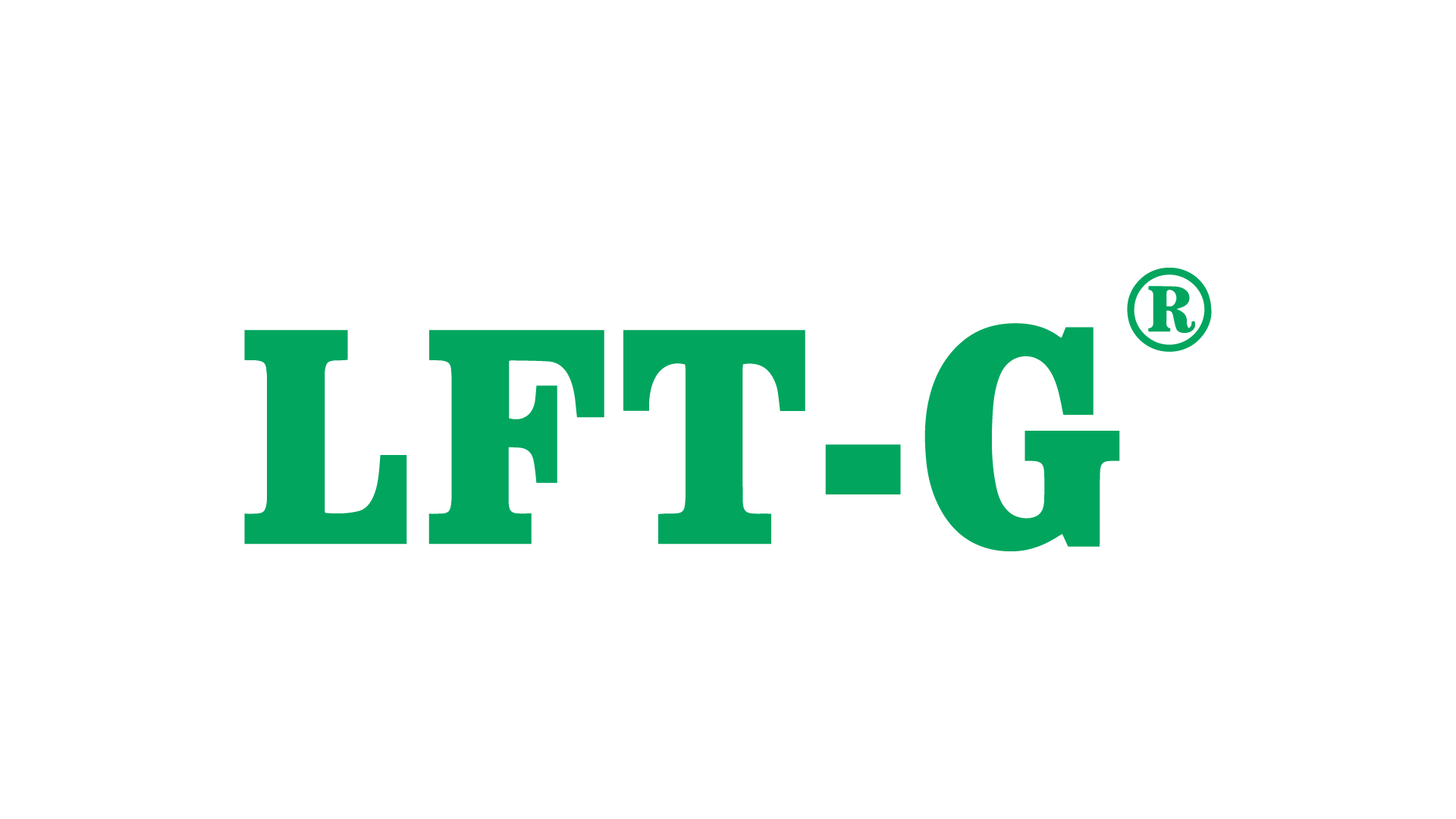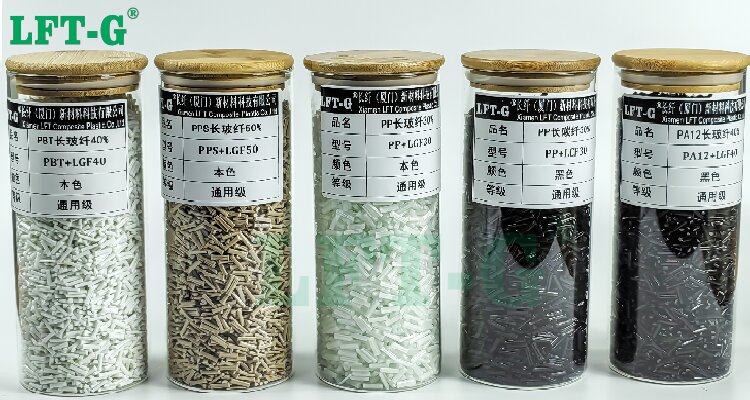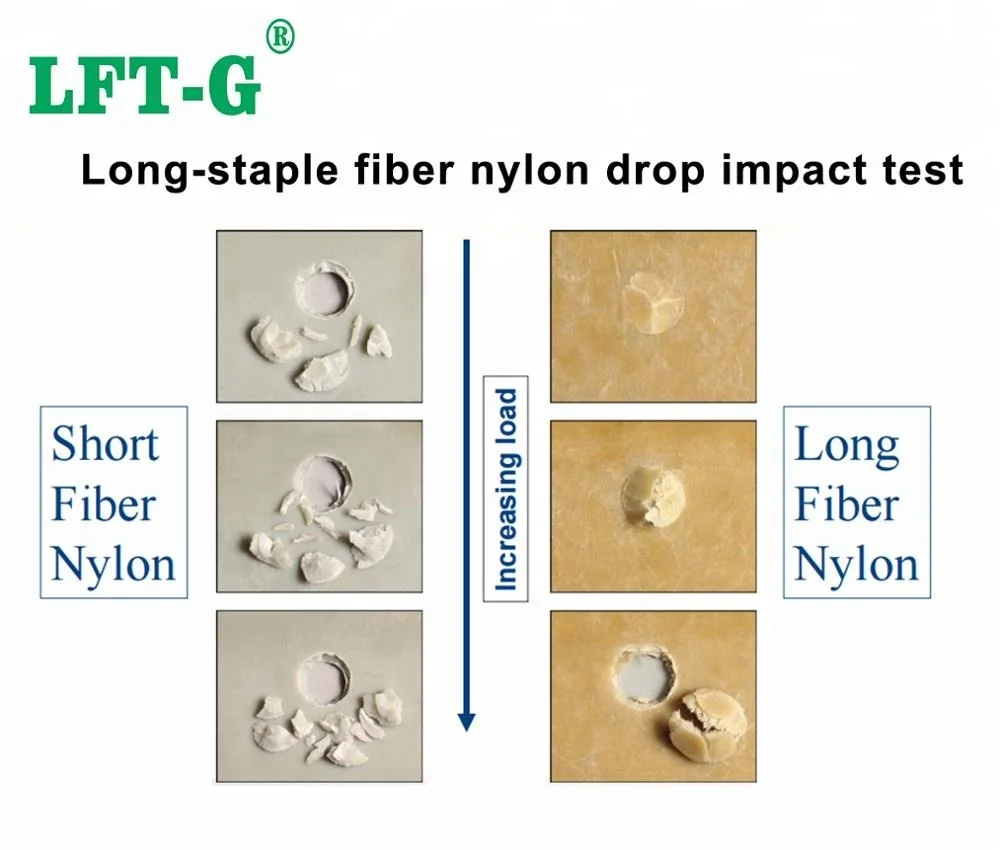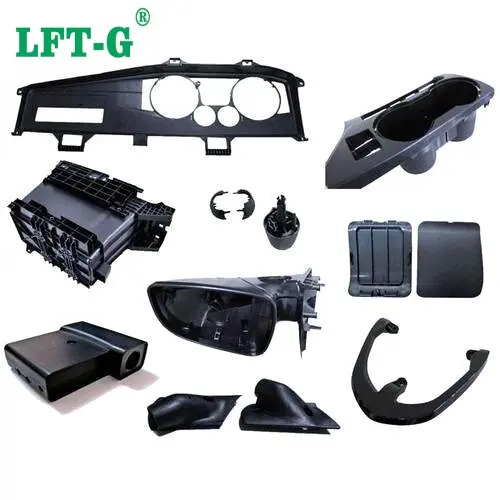
في السنوات الأخيرة، ارتفع الطلب على المواد المركبة عالية الأداء في مختلف الصناعات بسبب الحاجة المتزايدة إلى المواد التي تجمع بين القوة العالية والوزن المنخفض. ظهرت راتنجات اللدائن الحرارية المقواة بالألياف الطويلة، وخاصة تلك التي تحتوي على ألياف زجاجية طويلة (LGF) وألياف الكربون الطويلة (LCF)، كمنافسين أقوياء في استبدال المعادن التقليدية في تطبيقات تتراوح من السيارات إلى الفضاء الجوي. في هذه المقالة، سوف نستكشف الاختلافات بين المركبات المقواة بالألياف الطويلة والمركبات القياسية، بالإضافة إلى التطبيقات المتنوعة لراتنجات اللدائن الحرارية المقواة بالألياف الطويلة في التصنيع الحديث.

1. ما هي راتنجات اللدائن الحرارية المقواة بالألياف الطويلة؟
لدن بالحرارة مقوى بالألياف الطويلةالراتنجات عبارة عن مواد مركبة متقدمة تجمع بين مصفوفة بوليمر وألياف طويلة لتعزيز الخواص الميكانيكية. تعمل هذه الألياف - التي غالبًا ما تكون من الزجاج أو الكربون - كتعزيز داخل المادة البلاستيكية الحرارية، مما يحسن قوتها وصلابتها ومقاومتها للصدمات، مع الحفاظ على المرونة المتأصلة في المادة وسهولة معالجتها.
على عكس الراتنجات الحرارية التقليدية، التي تعالج بشكل دائم بمجرد تشكيلها، يمكن إعادة معالجة الراتنجات البلاستيكية الحرارية وإعادة تشكيلها عدة مرات، مما يجعلها متعددة الاستخدامات للغاية لمجموعة متنوعة من التطبيقات. يعمل تعزيز الألياف الطويلة على رفع أداء المادة بشكل كبير، مما يوفر نسب قوة إلى وزن فائقة مقارنة بالمركبات التقليدية، مما يجعلها مثالية للصناعات التي تعتبر المتانة وانخفاض الوزن أمرًا بالغ الأهمية.
2. اللدائن الحرارية المقواة بالألياف الطويلة مقابل المركبات القياسية: الاختلافات الرئيسية
في حين أن كلاً من اللدائن الحرارية المقواة بالألياف الطويلة (LFRT) والمواد المركبة القياسية توفر قوة ومتانة معززة، إلا أن هناك بعض الاختلافات الرئيسية التي تميز LFRT من حيث الأداء والتطبيق.
أ) طول الألياف
يكمن الاختلاف الأكثر أهمية بين اللدائن الحرارية المقواة بالألياف الطويلة والمركبات القياسية في طول الألياف. في المواد المركبة القياسية، تكون الألياف عادةً قصيرة وموجهة بشكل عشوائي، مما يحد من قوتها وأدائها. في المقابل، تستخدم مواد LFRT أليافًا طويلة، تتم محاذاتها في اتجاهات محددة أو مرتبة بشكل عشوائي ولكنها تحافظ على طول يحسن بشكل كبير السلامة الهيكلية للمادة.
ب) القوة الميكانيكية
توفر الألياف الطويلة قوة ميكانيكية فائقة مقارنة بالألياف القصيرة. تتيح الطبيعة المستمرة للألياف الطويلة توزيعًا أفضل للحمل، مما يحسن قوة شد المادة وقوة الانثناء ومقاومة الصدمات. وهذا يجعل LFRT مثاليًا للتطبيقات عالية الضغط حيث يجب أن تتحمل المادة القوى الميكانيكية دون أن تنكسر أو تتشوه.
ج) المتانة والأداء
توفر مواد LFRT عادةً مقاومة أفضل للتعب واستقرارًا حراريًا مقارنة بالمواد المركبة القياسية. تعمل الألياف الطويلة على تعزيز قدرة المادة على مقاومة التآكل والتدهور بمرور الوقت، مما يجعلها أكثر ملاءمة للتطبيقات طويلة الأمد في البيئات القاسية، مثل السيارات أو الفضاء الجوي.
د) سهولة المعالجة
من مزايا اللدائن الحرارية المقواة بالألياف الطويلة سهولة معالجتها. في حين أن المركبات القياسية غالبا ما تتطلب عمليات معالجة أكثر تعقيدا وتستغرق وقتا طويلا، يمكن معالجة LFRTs بسرعة أكبر بسبب طبيعة الراتنج بالحرارة. وهذا يعني أن المصنعين يمكنهم الاستمتاع بدورات إنتاج أقصر وإمكانية إعادة التدوير دون التضحية بالأداء.

3. تطبيقات راتنجات اللدائن الحرارية المقواة بالألياف الطويلة
أدى تعدد استخدامات راتنجات اللدائن الحرارية المقواة بالألياف الطويلة إلى اعتمادها في مجموعة متنوعة من الصناعات. سنستكشف هنا بعض التطبيقات الأكثر شيوعًا:
أ) صناعة السيارات
كانت صناعة السيارات واحدة من أكبر المستفيدين من المواد البلاستيكية الحرارية المقواة بالألياف الطويلة. ومع تزايد الحاجة إلى تقليل وزن المركبات من أجل كفاءة استهلاك الوقود وتقليل انبعاثات الكربون، تحل LFRTs بشكل متزايد محل المعادن مثل الفولاذ والألمنيوم في المكونات الهيكلية والأجزاء الداخلية وألواح الهيكل الخارجية. تشمل التطبيقات الشائعة ما يلي:
- المكونات الهيكلية: يتم استخدام اللدائن الحرارية المقواة بالألياف الطويلة في الأجزاء الهيكلية المهمة مثل المصدات وألواح الأبواب ومكونات الهيكل، مما يوفر مقاومة فائقة للصدمات مع الحفاظ على الوزن منخفضًا.
- المكونات الداخلية: تستخدم مواد مثل البولي بروبيلين المقوى بالألياف الزجاجية الطويلة (LGF-PP) في لوحات العدادات وإطارات المقاعد والأجزاء الداخلية الأخرى التي تتطلب توازن القوة والمرونة.
- الأجزاء الخارجية: تُستخدم اللدائن الحرارية الطويلة المقواة بألياف الكربون في إنتاج ألواح الهيكل الخارجية خفيفة الوزن وعالية القوة والتي تساهم في كفاءة استهلاك الوقود بشكل عام.

ب) الفضاء والطيران
تتطلب صناعة الطيران والفضاء مواد توفر نسب قوة إلى وزن استثنائية ومتانة عالية الأداء. تعتبر راتنجات اللدائن الحرارية المقواة بالألياف الطويلة مثالية لهذا التطبيق، لأنها تساعد على تقليل الوزن مع الحفاظ على القوة والصلابة في الأجزاء المهمة. تشمل التطبيقات:
- جسم الطائرة ومكونات الجناح: تُستخدم LFRTs لتصنيع أجزاء طائرة أخف وزنًا وأكثر كفاءة في استهلاك الوقود، مما يقلل من تكاليف التشغيل ويعزز الأداء.
- المكونات الداخلية: يتم تصنيع مكونات مثل إطارات المقاعد، والصناديق العلوية، وجدران المقصورة بشكل متزايد من اللدائن الحرارية المقواة بالألياف الطويلة نظرًا لقدرتها على الجمع بين القوة العالية والوزن المنخفض.
ج) الإلكترونيات والمعدات الكهربائية
في قطاع الإلكترونيات والمعدات الكهربائية، تكتسب راتنجات اللدائن الحرارية المقواة بالألياف الطويلة شعبية بسبب مقاومتها الحرارية العالية وخصائص العزل الكهربائي. وتستخدم هذه المواد في صناعة:
- العلب الكهربائية: غالبًا ما تستخدم الراتنجات المقواة بالألياف الزجاجية الطويلة في العبوات والموصلات الكهربائية، مما يوفر العزل ومقاومة الصدمات.
- مكونات التبريد: تعتبر LFRTs مثالية للمكونات الموجودة في الأجهزة الإلكترونية التي تتطلب مقاومة للحرارة، مثل مراوح التبريد وأنظمة الإدارة الحرارية.
د) التطبيقات الصناعية
تتحول الصناعات المشاركة في الآلات الثقيلة والبناء والتصنيع إلى راتنجات اللدائن الحرارية المعززة بالألياف الطويلة لقدرتها على تحمل الضغوط الشديدة مع كونها خفيفة الوزن. تشمل التطبيقات:
- أجزاء الآلات: تستفيد المكونات مثل التروس والأقواس والمبيتات من LFRTsâ المقاومة الممتازة للتآكل والمتانة.
- الأنابيب ولوازمها: تستخدم اللدائن الحرارية الطويلة المقواة بالألياف في إنتاج أنظمة الأنابيب المتينة التي تحتاج إلى مقاومة الضغوط العالية والمواد المسببة للتآكل.
ه) السلع الرياضية والمنتجات الاستهلاكية
تشق اللدائن الحرارية المعززة بالألياف الطويلة طريقها أيضًا إلى قطاع المنتجات الاستهلاكية، حيث يعتبر الأداء والمتانة والوزن أمرًا بالغ الأهمية. في سوق السلع الرياضية، يتم استخدام LFRTs في:
- مضارب الجولف ومضارب التنس: تعمل خصائص LFRTs خفيفة الوزن وعالية القوة على تحسين أداء المعدات الرياضية، مما يوفر متانة معززة دون المساس بالمرونة.
- الدراجات وملحقاتها: تُستخدم LFRTs في إنتاج إطارات وعجلات وإكسسوارات الدراجات عالية الأداء، مما يوفر القوة والوزن.
4. مستقبل راتنجات اللدائن الحرارية المقواة بالألياف الطويلة
مع استمرار الصناعات في إعطاء الأولوية للاستدامة وقابلية إعادة التدوير والأداء في التصنيع، من المتوقع أن يزداد الطلب على راتنجات اللدائن الحرارية المعززة بالألياف الطويلة بشكل كبير. ستعمل الابتكارات في تكنولوجيا المعالجة وتطوير الألياف والراتنجات ذات الأساس الحيوي على توسيع نطاق استخدام LFRTs في مجموعة متنوعة من القطاعات.
في قطاع السيارات، على سبيل المثال، من المرجح أن يؤدي التحول نحو السيارات الكهربائية إلى زيادة الحاجة إلى مواد خفيفة الوزن وعالية القوة يمكنها تحسين الكفاءة والمدى. وبالمثل، فإن التقدم في تقنيات الطباعة ثلاثية الأبعاد سيفتح أبوابًا جديدة للتخصيص والنماذج الأولية السريعة للأجزاء البلاستيكية الحرارية الطويلة المعززة بالألياف، مما يجعلها في متناول الشركات المصنعة.
5. انتهى
تُحدث راتنجات اللدائن الحرارية المعززة بالألياف الطويلة ثورة في الصناعات من خلال تقديم مواد عالية القوة خفيفة الوزن تلبي متطلبات التصنيع الحديث. ومع مزاياها التي تتفوق على المركبات القياسية من حيث الأداء والمعالجة والاستدامة، أصبحت هذه المواد المتقدمة هي الحل الأمثل في صناعات تتراوح من السيارات إلى الفضاء الجوي والإلكترونيات وغيرها.
مع استمرار نمو الطلب على المواد المركبة عالية الأداء، ستلعب اللدائن الحرارية المقواة بالألياف الطويلة دورًا متزايد الأهمية في إنشاء الجيل التالي من المنتجات خفيفة الوزن والمتينة والفعالة. سواء كنت تعمل في قطاع السيارات أو الطيران أو الصناعة، فإن فهم فوائد وتطبيقات LFRTs يمكن أن يساعدك على البقاء في المقدمة في السوق المتطور.



